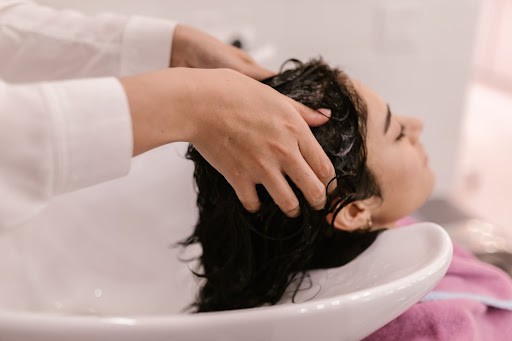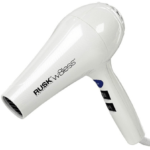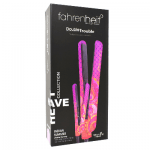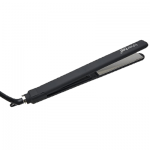With new hairstyles, trends and techniques constantly evolving, it’s hard to know what’s okay and not okay to do to your strands. Lately, a highlighting trend known as wet balayage has been circulating and having people wonder whether or not to follow the cardinal rule of dying hair: don’t apply bleach to wet strands. Can you put bleach on wet hair? Only sometimes? What measures can you take to keep your locks healthy if you do apply bleach on damp hair?
These are all questions we’ll be answering below, so if you’re interested in learning more – keep reading, beautiful!

Reasons Why Colorists Bleach Wet Hair
The reasons behind why colorists might apply bleach to wet hair are many. Below, we’ll go over some of them:
Faster Application
If you go into the salon and request a speedy treatment because you’re strapped on time, it’s likely that your colorist will use wet balayage technique. The reason for this is because the bleach processes more quickly on wet hair.
Bright Ends
Wet balayage works very well when it comes to giving a boost to previously lightened ends between color appointments. It can also be used to brighten and enhance the ends of hair following a normal highlight session.
Subtle Lighting Effect
If your colorist is aiming to give a subtle light to your hair, they might use the wet balayage technique. When the water dilutes the bleach, you’re able to achieve a slight change in color as opposed to dramatic. Also, the water functions to evenly spread the bleach, which prevents harsh transitions in your tresses.
Isn’t Bleaching More Harmful on Wet Hair?
So, although there are benefits and convenience to using bleach on wet hair (like we mentioned above), there are consequences to keep in mind as well. Let’s explore these below:
Wet Hair Equals Weak Hair
The wet balayage technique can be rough on your strands. This is because hair is at its weakest when it’s wet. Water causes cuticles to open up, which are what protect the middle part of each strand called the cortex.
Within each strand’s cortex, there is melanin, which gives hair its color. When strands are wet and cuticles are open, hair is more vulnerable to damage (which is also why it’s easier for bleach to penetrate).
Avoid Doing This at Home
When it comes to trying out the wet balayage technique on your strands, you’re better off waiting until you can hit the salon. Unlike trimming your split ends, doing this wet-hair bleach technique is better left to the people who know exactly how to do it. Why? Well, if the technique is done incorrectly, you can significantly harm your hair.
Trained Colorists Are Meant for the Job
Trained colorists are meant for the job – literally. When the time comes that you want to try bleaching your hair while it’s wet, leave it for the professionals. You want to make sure the technique is practiced safely on your strands and that they are ultimately protected as much as possible. There’s no better person for it than a trained colorist! Here are a few reasons why:
- Colorists can apply the correct amount of water before bleach application.
- They may also use a unique conditioner to help minimize damage.
- Also, they will know if the wet balayage technique will actually help you achieve the look you’re after.
Bleached-Hair Best Practices
If you’re wanting to bleach your strands, it’s not the end of the world for your hair. There are absolutely some steps you can take to add protection and help prevent brittle and dry locks:
- Deep Condition. In the weeks leading up to your coloring appointment, it’s highly encouraged that you deep-condition your hair. What this does is it hydrates your strands prior to bleaching and ultimately helps reduce the risk of breakage.
- Don’t Shampoo Beforehand. If you’re wondering: Should I wash my hair before bleaching it, the answer is no! This is because your hair’s natural oils and sebum will protect your scalp during the bleaching process.
- Space Out Appointments. We know how important it is to keep hair maintained and roots managed, but it’s best to limit your bleaching sessions and space them out to give your hair well-deserved breaks.
- Shade, shade, shade! To prevent further damaging your bleached hair, it’s highly encouraged to avoid exposing your hair to the sun too much. Wear a hat!
With that said, we wish you the best in your hair bleaching endeavors!


